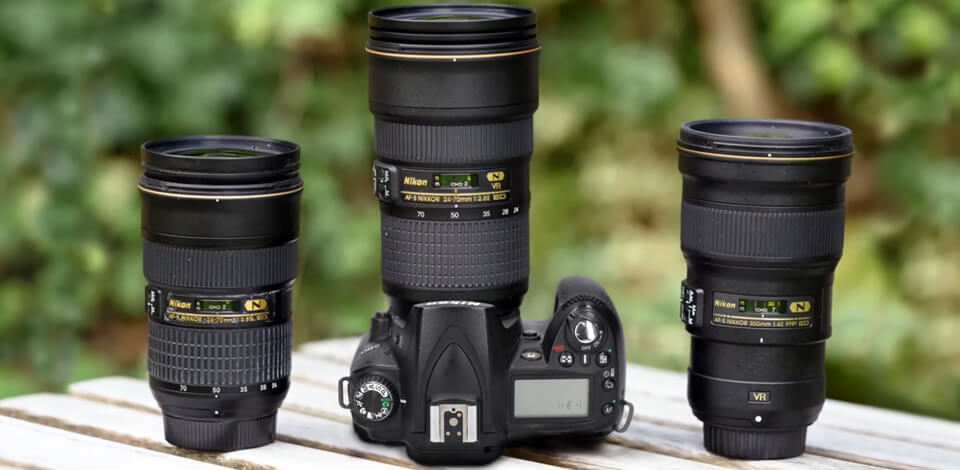
Lots of beginners still choose the Nikon D90 as their first camera because it’s affordable, works well, and gives photos that classic Nikon color look. Since the camera has been around for a long time, adding the right Nikon D90 lens is the best way to make it feel new again.
When I recently picked up my old Nikon D90 camera again, I was reminded of how much I’ve grown as a photographer since I first used it. This was the first “real” camera I used when I started getting serious about photography. Even though it’s an older model now, it can still take amazing photos, especially if you use a good lens with it.
So, I decided to do a full review with my team to find out the best lenses for the Nikon D90. We wanted to cover everything: portraits, landscapes, zoom shots, wide-angle views, and everyday use. I talked to other photographers, asked clients, read Reddit threads, and checked Amazon reviews. After that, I rented and borrowed over 15 different lenses to test them in real-life situations.
What I look for in lenses for the Nikon D90:One of the first things I always tell people who are new to the D90 is to check the Nikon D90 lens mount type. It works with F-mount lenses and has a DX sensor. So, you need to use Nikon DX or FX lenses that work properly with it.
That might seem obvious, but many beginners accidentally buy lenses that don’t autofocus with the D90 or don’t match the sensor size. Besides that, here are a few other things to keep in mind:
Learn what the letters mean on Nikon D90 lenses:
Choose your lens based on what you like to shoot. For portraits, try 35mm or 50mm lenses. Landscapes or room interiors? Go for wide-angle lenses like 11–16mm. Sports or animals? A zoom lens like 55–200mm is a good choice.
Look at the aperture. Lenses for Nikon D90 with the maximum aperture of f/1.8 or f/2.8 let in more light, which is helpful when shooting in dark places. It also makes backgrounds blurry and cool.
Build quality and how it feels matter too. I’ve taken photos in the rain, snow, and hot weather, and I believe that how the lens feels in your hand and how it handles these situations can make a big difference. Even small things, like how smoothly the zoom ring turns, can affect your overall experience.
Think about balance with the camera. Some lenses are big and heavy, and the D90 is a smaller camera. If the lens is too heavy, the camera can feel unbalanced, which makes it hard to hold steady. When I give a beginner a camera that feels too heavy in front, they often get shaky photos.
If you take a little time to learn these small things early on, it’s much easier to find the right lens.
Amazon: 50+ bought in past month
B&H: 650+ sold in the past year
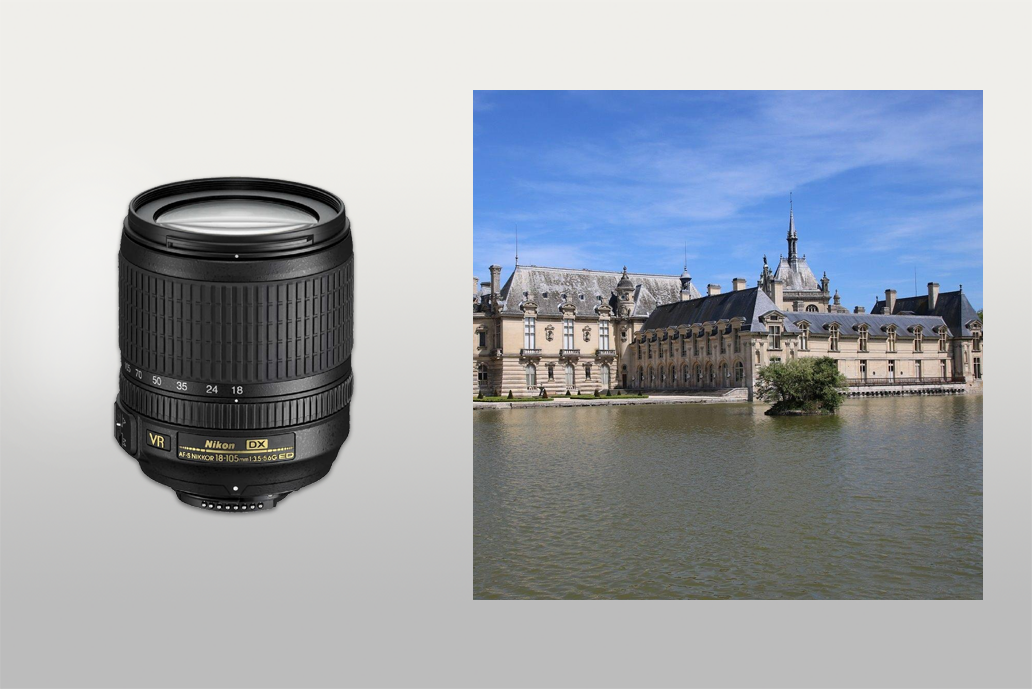
Focal length: 18–105mm | Aperture: f/3.5–5.6 | VR: 3-stop stabilization | Mount: Nikon F (DX) | Focus motor: AF-S Silent Wave | Weight: 420g | Filter thread: 67mm
When I saw this Nikon D90 lens at the top of Amazon’s recommended list, I rented it for a week and took it on a weekend trip, where I used it to take photos of streets in the morning, quick portraits in the afternoon, and even some nighttime shots of the city. The first thing I liked was how well it fit with the D90. It felt light and comfortable, even after using it all day.
The zoom range was perfect for almost everything I wanted to shoot. The VR feature helped keep my photos clear, even when I held the camera in my hands without a tripod and used slow shutter speeds. The colors looked natural, and I got that warm tone I’ve always liked. I was also surprised by how sharp the photos were, especially for a lens that many people consider a “kit upgrade.”
However, it’s not a perfect lens. The variable aperture doesn’t let in as much light indoors or during sunset compared to lenses like the Sigma 17-70mm f/2.8. Also, the outside of the lens is made of plastic, so it doesn’t feel as strong as the more expensive Nikon D90 lenses. Still, if you’re just starting out as a photographer or want one lens that does almost everything, this one is a great pick.
Tip for beginners: learn how the Nikon lens for portraits works at different zoom levels. At 18mm, you can take portraits that show the person and their surroundings. At 105mm, the background looks softer, and faces look more flattering. Also, don’t forget how helpful VR can be, as it allows you to take clear pictures at slower speeds, like 1/20 of a second, if your hands are steady.
Amazon: 50+ bought in the past month
B&H: 1K+ sold in the past year
Adorama: 800+ sold in the past year
Best Buy: 700K+ sold in the past year

Focal length: 35mm | Aperture: f/1.8 | VR: No | Mount: Nikon F (DX) | Focus motor: AF-S Silent Wave | Weight: 200g | Filter thread: 52mm | Build: Compact plastic, metal mount
A colleague of mine really likes the 35mm f/1.8G, so I borrowed it to see why she thought it was so good. I used it for a few days to take portraits, everyday lifestyle photos, and some low-light street shots. The first thing I noticed was how small and light it was. With this lens, the D90 felt compact and easy to carry.
When I used it at f/1.8, the background became soft and blurry. This wide opening also let in a lot of light, so I didn’t need to raise the ISO much, even indoors.
Compared to the 18-105mm lens, this Nikon D90 prime lens doesn’t zoom at all. That means I had to walk closer or farther to get the framing I wanted. But that’s part of what makes using a prime lens interesting: it makes you think more about how to frame your picture.
One thing I didn’t like was how it felt a little too “zoomed in” when I was indoors. It was sometimes hard to fit everything into the frame. So, in tight spaces, I would switch to a wider lens like the Tokina 11–16mm.
Big tip for new users: try taking photos at different distances when using f/1.8. The closer you get to your subject, the blurrier the background will be, but the area in focus becomes very small. That means if you’re not careful, it’s easy to focus on the wrong part, like the nose instead of the eyes.
Amazon: 30+ bought in the past month
B&H: 450+ sold in the past year
Adorama: 400+ sold in the past year
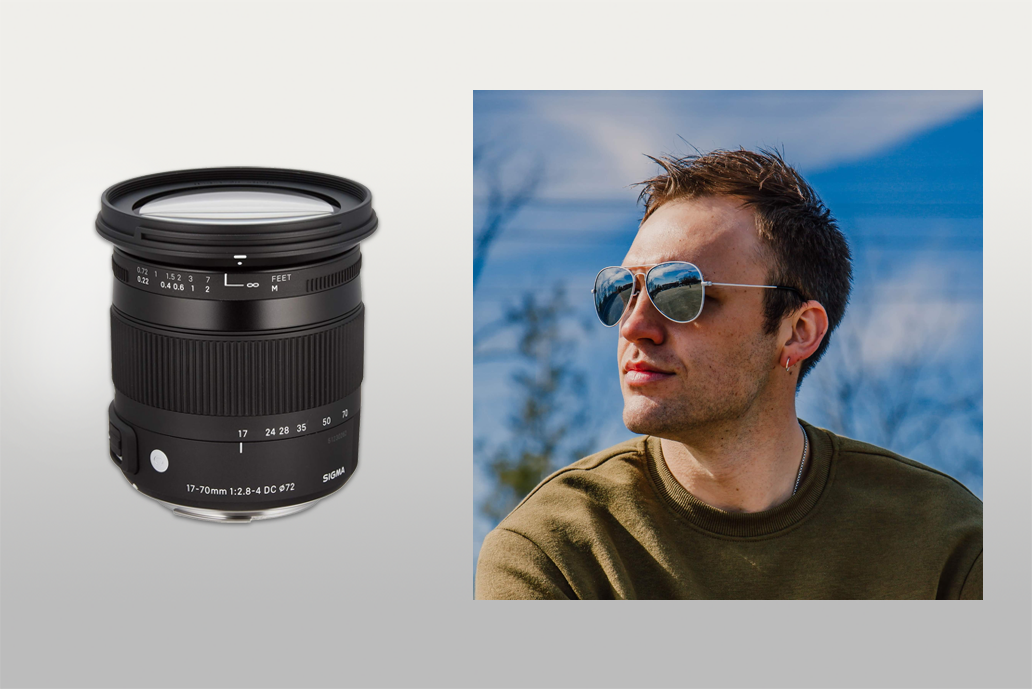
Focal length: 17–70mm | Aperture: f/2.8–4 | OS: Optical stabilization | Mount: Nikon F (DX) | Focus motor: HSM Hyper-Sonic Motor | Weight: 465g | Filter thread: 72mm | Build: Solid metal/plastic hybrid
I tested the Sigma 17-70mm f/2.8 OS HSM after seeing several YouTube videos recommend it. I used it for portrait shoots and during a day trip where I needed a lens that could do a little bit of everything. One of the first things I noticed was the constant f/2.8 aperture. This is a big help in low light and much better than the kit lenses that change as you zoom.
The lens felt strong and steady in my hands, which made it feel more like a Nikon D90 pro lens. The colors it produced looked a little cooler, but the photos were sharp at all zoom levels. I liked how it handled portraits between 35mm and 50mm. It made the person stand out from the background nicely, but it didn’t blur everything too much like the 35mm f/1.8 sometimes does.
When I compared it to the Tamron 17–50mm, I noticed that this Sigma lens could zoom all the way to 70mm, which was useful when I wanted a closer shot without changing the lens. Something beginners might not think about at first is how helpful a constant aperture is. It makes learning manual mode easier because your camera settings don’t change just because you zoomed in.
One small downside is that this lens is bigger than some others, so it’s not as easy to carry around without being noticed, especially if you're looking for a lens for street photography.
Amazon: 30+ bought in the past month
Ebay: 350+ sold in the past year
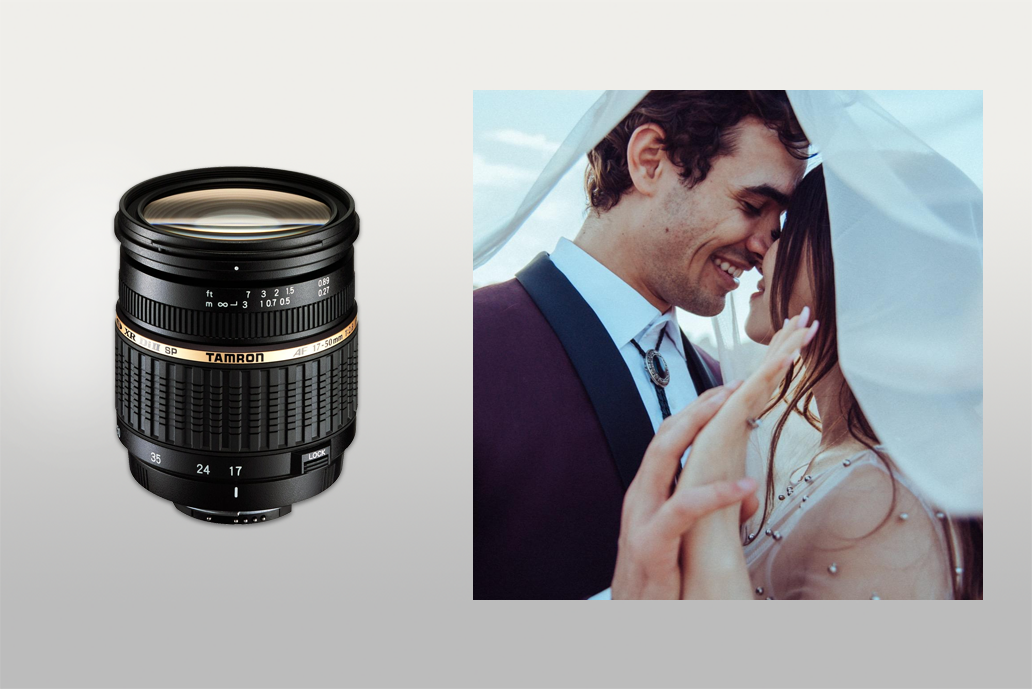
Focal length: 17–50mm | Aperture: f/2.8 constant | VC: No | Mount: Nikon F (DX) | Focus motor: Built-in motor | Weight: 430g | Filter thread: 67mm | Build: Compact plastic body, metal mount
After using the Sigma lens, I wanted to try the Tamron 17-50mm f/2.8 that a coworker recommended. I tested it during a few lifestyle photo shoots and a wedding to see how well it performed in low light.
Straight away, I noticed that the Tamron is smaller and fits nicely on the Nikon D90. It felt good for long days of shooting. This Nikon D90 lens also has a constant f/2.8 aperture, which helped a lot in dark settings, as I didn’t need to raise the ISO much, and the blurred background in portraits looked smooth and soft in a natural way.
Unlike the Sigma, the Tamron can’t zoom in quite as far. A few times, I wished I had that extra 20mm reach when taking pictures from farther away. Also, the autofocus on this lens isn’t as fast or quiet as some Nikon D90 lenses with AF-S, so you might miss a quick shot if the subject is moving. However, as a lens for portraits and everyday use, the lens works well and takes nice, clear pictures.
If you use this lens, my biggest tip is to spend time shooting at 35mm to 50mm, as that’s where it gives the best, most natural-looking portraits.
Amazon: 200+ bought in past month
B&H: 3K+ sold in the past year
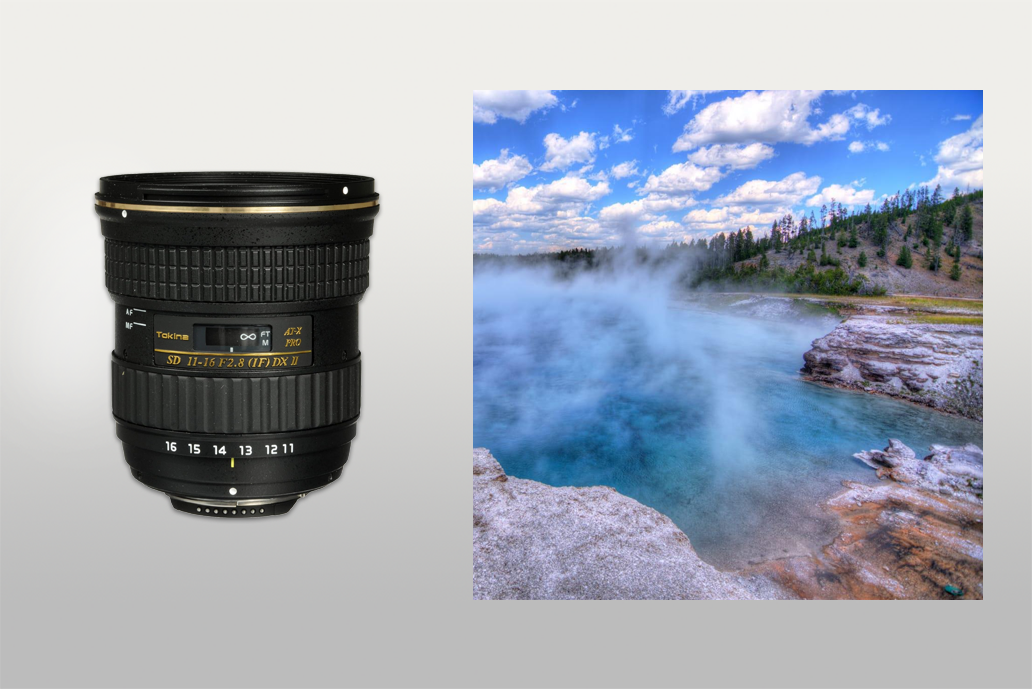
Focal length: 11–16mm | Aperture: f/2.8 constant | VR/OS: No | Mount: Nikon F (DX) | Focus motor: Built-in silent drive | Weight: 560g | Filter Thread: 77mm | Build: Rugged pro-grade construction, metal barrel
Trying out the Tokina 11–16mm lens on the Nikon D90 was one of the most exciting experiences. It made me think differently about how to take photos. I borrowed it because so many people on Reddit said it was the best wide-angle lens for the Nikon D90. I used this lens for landscape photography, interior photography, and some nighttime city shots.
This lens has a super-wide view, which changes the way your photos look. It makes your pictures feel bigger and more dramatic. It also has a constant f/2.8 aperture, which helps in low light. I even tried taking a picture of the stars. While the D90’s older sensor isn’t perfect for that, the lens still did a great job showing the stars clearly.
When I compared it to the 18–105mm lens at its widest zoom, the Tokina was much sharper, even at the corners of the photo, and didn’t stretch or distort the image at 11mm. This lens isn’t good for every situation, though. If you’re taking pictures of people, especially close-up, wide angles can make faces look strange.
This wide-angle lens felt heavier than I thought, but it’s made of strong materials and feels very tough. Beginner tip: if you tilt the camera too much, your photo might look stretched, so try to keep the horizon straight for the best results.
Amazon: 40+ bought in the past month
Adorama: 500+ sold in the past year
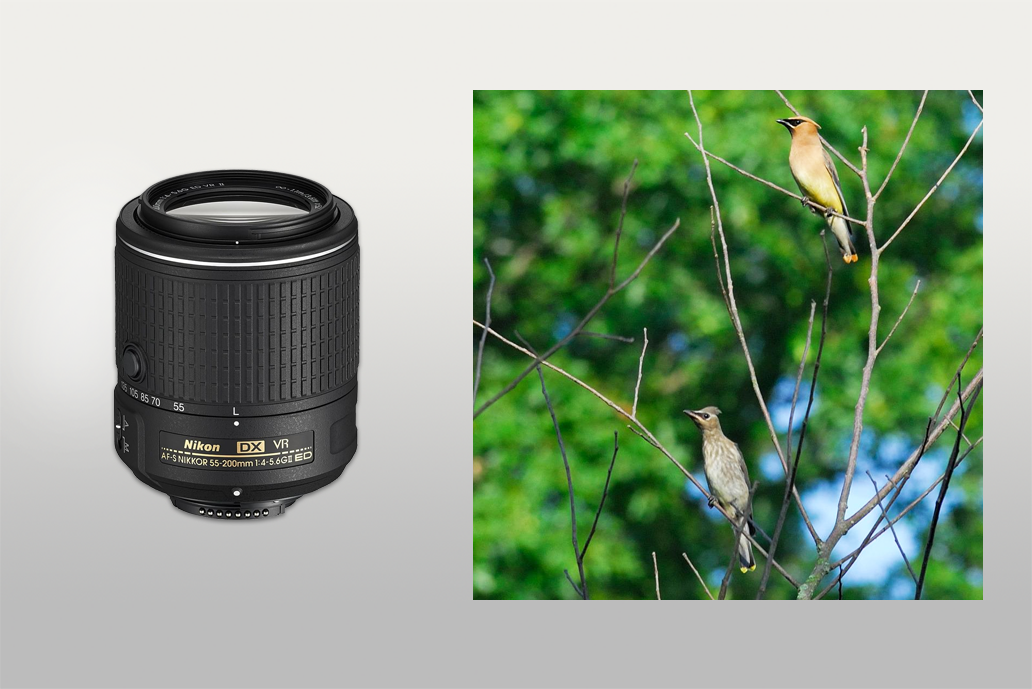
Focal length: 55–200mm | Aperture: f/4–5.6 | VR: 4-stop stabilization | Mount: Nikon F (DX) | Focus motor: AF-S Silent Wave | Weight: 300g | Filter thread: 52mm | Build: Lightweight plastic, collapsible barrel
One of my colleagues, who mostly uses zoom lenses, told me to try the Nikon 55–200mm f/4-5.6G ED VR II on the D90. So, I tested it during a weekend soccer game and a walk in the park to see how well it worked for wildlife and sports photos.
The first thing I noticed was how light and easy to carry this telephoto lens for Nikon D90 is. When I attached it, the camera didn’t feel heavy or hard to hold, which is helpful when you’re shooting for a long time without a tripod. The VR stabilization was great. I was able to take sharp photos, even when zoomed to 200mm, just holding the camera in my hands in low light.
The color rendering was nice, and between 85mm and 135mm, the lens provided a cool, compressed look in portraits, where the background appears closer and softer. This isn’t a very fast lens, though. Because the aperture changes as you zoom, it’s harder to use in dark places, unless you increase the ISO.
Compared to the 18–105mm lens, this one can zoom in much more, which helps you focus on far-away subjects. But I did miss having the ability to zoom out wide without switching lenses. One thing I’ve learned over time with zoom lenses is that your body movement matters. Even with image stabilization, how you stand and breathe when shooting can affect how sharp your photo is.
Amazon: 50+ bought in the past month
Adorama: 600+ sold in the past year
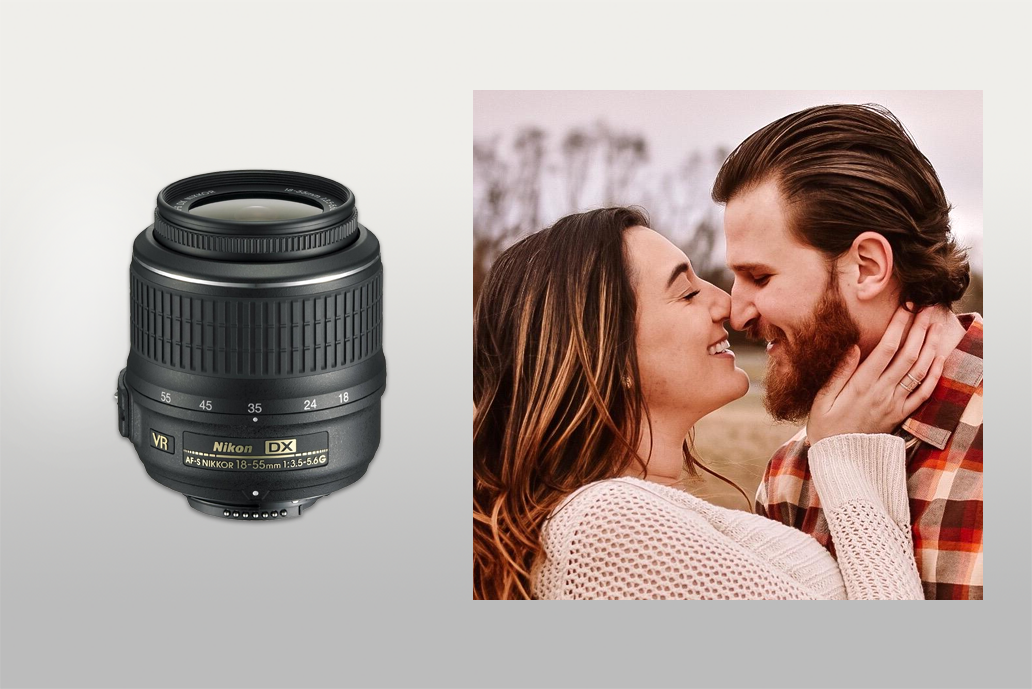
Focal length: 18–55mm | Aperture: f/3.5–5.6 | VR: 3-stop stabilization | Mount: Nikon F (DX) | Focus motor: AF-S Silent Wave | Weight: 265g | Filter thread: 52mm | Build: Compact plastic, retractable design
One of my clients, whose photos I've edited numerous times, always uses this lens and says it's her favourite. So, I decided to try it to understand why this low-cost, beginner-friendly Nikon D90 lens remains so popular. I took it with me on a weekend to shoot family portraits, street scenes, and close-up café photos.
The best thing about this lens is how light and small it is. When it's on the Nikon D90, it feels almost like a point-and-shoot. The VR helps keep photos sharp when holding the camera, especially when zoomed in to 55mm.
In bright light, the lens takes surprisingly sharp photos. It works as a lens for family portraits and everyday pictures. However, it does have some limits: you won't get strong background blur or good results in darker settings like you would with the 35mm f/1.8 Nikon D90 lens.
Something I always tell beginners is to spend time shooting at 35-50mm. That zoom range gives you a natural look that works great for portraits and street photography, and you don’t get any distortions. Compared to the 18-105mm lens, you don't get as much zoom with the 18-55mm, but it's smaller, lighter, and easier to carry everywhere. It's also more comfortable to learn.
To make sure my list of the best lenses for Nikon D90 wasn't just based on reading specs, I did direct testing with the entire FixThePhoto team during real photoshoots. While I led the project and tested most of the lenses in the field, my coworkers helped by testing lenses in the areas they know best, which include portraits, landscapes, wildlife, and low-light photos.
We tested over 15 different lenses made for the Nikon D90, but some of them didn't make the final list because they didn't perform well in real-life use. Here are a few examples:
We tested each lens using the same steps. Here's what we looked at:
This whole testing process took over a month. We worked back-to-back, took lots of notes, and did hundreds of side-by-side comparisons. By the end, we didn't just pick lenses that were fine; we chose the best ones that can help the Nikon D90 perform well, even today.